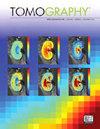将化疗前咀嚼肌总体积作为局部晚期鼻咽癌患者放疗诱发三体症的新预测指标
IF 2.2
4区 医学
Q2 RADIOLOGY, NUCLEAR MEDICINE & MEDICAL IMAGING
引用次数: 0
摘要
背景:我们试图确定在局部晚期鼻咽癌(LA-NPC)患者接受同期放化疗(C-CRT)时,治疗前的总咀嚼肌体积(TMMV)测量值能否预测放疗诱发的咀嚼肌畸形(RIT)。研究方法我们回顾性审查了接受 C-CRT、治疗前最大张口度 (MMO) 大于 35 毫米的 LA-NPC 患者的病历。C-CRT后最大张口(MMO)小于或等于35毫米被视为RIT。我们采用接收器操作特征曲线 (ROC) 分析来探讨治疗前 TMMV 读数与 RIT 状态之间的相关性。结果:在 112 名符合条件的患者中,22.0% 的患者在 C-CRT 治疗后被诊断为 RIT。与C-CRT后RIT率显著相关的最佳TMMV临界值被确定为35.0cc[曲线下面积:79.5%;灵敏度:75%]:曲线下面积:79.5%;灵敏度:75.0%;特异度:78.6%;尤登指数:0.536]:在 ROC 曲线分析中,RIT 率被确定为 35.0 cc [曲线下面积:79.5%;敏感性:75.0%;特异性:78.6%;尤登指数:0.536]。TMMV≤5.0cc患者的RIT发生率明显高于TMMV>35.0cc的患者[51.2% vs. 8.7%; Odds ratio: 6.79; p < 0.001]。多变量逻辑回归分析显示,CRT 前 MMO ≤ 41.6 mm(p = 0.001)、平均咀嚼器剂量 V56.5 ≥ 34% 组(p = 0.002)和 TMMV ≤ 35 cc 是 RIT 发生率显著升高的独立预测因素。结论治疗前 TMMV 较小是一种可靠且独立的新型生物标记物,可预测接受 C-CRT 治疗的 LA-NPC 患者的 RIT 率升高。本文章由计算机程序翻译,如有差异,请以英文原文为准。
The Use of Pre-Chemoradiotherapy Total Masseter Muscle Volume as a Novel Predictor of Radiation-Induced Trismus in Locally Advanced Nasopharyngeal Carcinoma Patients
Background: We sought to determine whether pretreatment total masseter muscle volume (TMMV) measures can predict radiation-induced trismus (RIT) in patients with locally advanced nasopharyngeal carcinoma (LA-NPC) receiving concurrent chemoradiotherapy (C-CRT). Methods: We retrospectively reviewed the medical records of LA-NPC patients who received C-CRT and had pretreatment maximum mouth openings (MMO) greater than 35 mm. MMO of 35 mm or less after C-CRT were considered RIT. We employed receiver operating characteristic (ROC) curve analysis to explore the correlation between pre-treatment TMMV readings and RIT status. Results: Out of the 112 eligible patients, 22.0% of them received a diagnosis of RIT after C-CRT. The optimal TMMV cutoff that was significantly linked to post-C-CRT RIT rates was determined to be 35.0 cc [area under the curve: 79.5%; sensitivity: 75.0%; and specificity: 78.6%; Youden index: 0.536] in the ROC curve analysis. The incidence of RIT was significantly higher in patients with TMMV ≤ 5.0 cc than in those with TMMV > 35.0 cc [51.2% vs. 8.7%; Odds ratio: 6.79; p < 0.001]. A multivariate logistic regression analysis revealed that pre-C-CRT MMO ≤ 41.6 mm (p = 0.001), mean masticatory apparatus dose V56.5 ≥ 34% group (p = 0.002), and TMMV ≤ 35 cc were the independent predictors of significantly elevated rates of RIT. Conclusion: The presence of a smaller pretreatment TMMV is a reliable and independent novel biological marker that can confidently predict higher RIT rates in LA-NPC patients who receive C-CRT.
求助全文
通过发布文献求助,成功后即可免费获取论文全文。
去求助
来源期刊

Tomography
Medicine-Radiology, Nuclear Medicine and Imaging
CiteScore
2.70
自引率
10.50%
发文量
222
期刊介绍:
TomographyTM publishes basic (technical and pre-clinical) and clinical scientific articles which involve the advancement of imaging technologies. Tomography encompasses studies that use single or multiple imaging modalities including for example CT, US, PET, SPECT, MR and hyperpolarization technologies, as well as optical modalities (i.e. bioluminescence, photoacoustic, endomicroscopy, fiber optic imaging and optical computed tomography) in basic sciences, engineering, preclinical and clinical medicine.
Tomography also welcomes studies involving exploration and refinement of contrast mechanisms and image-derived metrics within and across modalities toward the development of novel imaging probes for image-based feedback and intervention. The use of imaging in biology and medicine provides unparalleled opportunities to noninvasively interrogate tissues to obtain real-time dynamic and quantitative information required for diagnosis and response to interventions and to follow evolving pathological conditions. As multi-modal studies and the complexities of imaging technologies themselves are ever increasing to provide advanced information to scientists and clinicians.
Tomography provides a unique publication venue allowing investigators the opportunity to more precisely communicate integrated findings related to the diverse and heterogeneous features associated with underlying anatomical, physiological, functional, metabolic and molecular genetic activities of normal and diseased tissue. Thus Tomography publishes peer-reviewed articles which involve the broad use of imaging of any tissue and disease type including both preclinical and clinical investigations. In addition, hardware/software along with chemical and molecular probe advances are welcome as they are deemed to significantly contribute towards the long-term goal of improving the overall impact of imaging on scientific and clinical discovery.
 求助内容:
求助内容: 应助结果提醒方式:
应助结果提醒方式:


